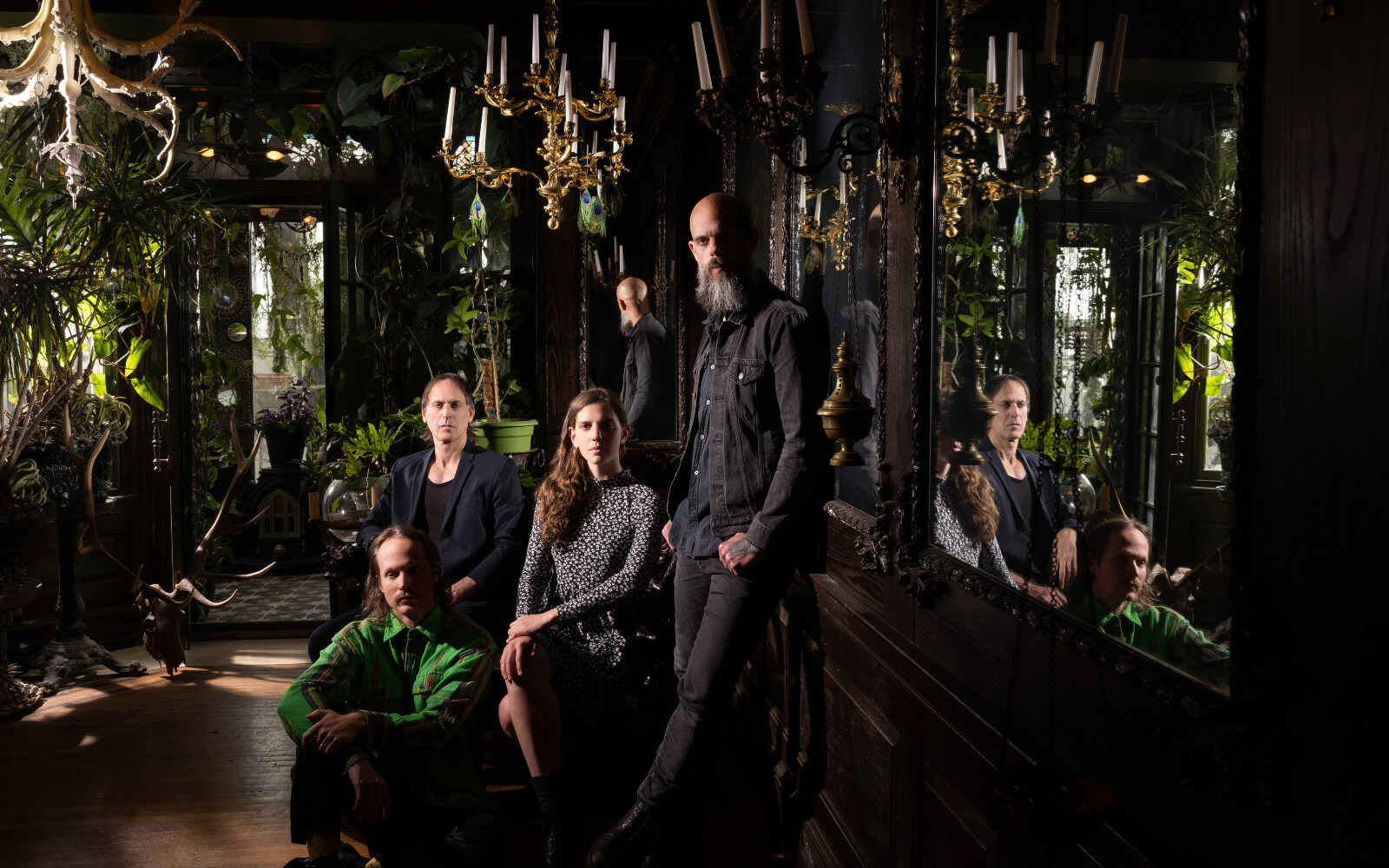By Alexia Bréard-Anderson
Look to the stars for thoughtful insight into your month ahead — We’re talking about actual rock stars here.
Surrounded by gravestones and monolithic mausoleums, Baizley thought about his eternal struggles of mortality, the nightmares that often plague his mind, and his stake in this world as a successful musician and visual artist. These didn’t become actual lyrics per se, but they certainly influenced some of the thematic weavings throughout STONE.
Baizley writes in short bursts of poetic, and sometimes devastating, stanzas—usually taking somewhat of an omniscient and introspective point of view. A perfect example is with STONE’s seventh track “Shine,” which could be about a person Baizley lost, or his own form of mental punishment.
“I’m always just trying to make sense of the world,” Baizley says. “I definitely have tendencies as a songwriter to write from a very intimate, personal level, but a Baroness record is always about the time that I’m actually writing it.”

Baroness performing live at the Palace Theatre in Calgary, AB in 2019. (Photo: Trevor Hatter)
Sometimes he finds himself subconsciously mining his brain for memory, and one that he will probably never be able to forget is the life-threatening, gruesome bus crash that left his arm and leg in literal pieces after the Baroness tour bus’ brakes failed—leaving the vehicle to plummet through a viaduct and 30-feet to the ground. It was a decade ago, yet subsequent departures of his bandmates left Baizley as the only core founding member of Baroness, and physically, he still feels chronic pain from the accident. Psychologically, this could be one of the sources to some of his darker dreams and lyrics. Still, Baizley isn’t the kind of guy to tell you what his songs mean.
“I realize that lyrically, this record almost feels like a Monet painting, an expressionist’s piece of artwork. It’s a lot of little stabs of energy, a lot of little stabs of thought,” he says.
None of these little stabs of thought make a whole lot of sense unto themselves, but combined over the course of a song, or more importantly, the course of a whole album like STONE, there is a weird conceptual story taking place. It’s one filled with pain, anger, joy, delusion, recurring motifs like angels and world-ending contemplation, and of course, top-notch musicianship from Baizley and the rest of Baroness.


If STONE is one thing, it’s this iteration of the band’s—Baizley, Gina Gleason on lead guitar/backing vocals, Nick Jost on bass/backing vocals, and Sebastian Thomson on drums—most bewitching and inventive batch of songs yet. You have the chugging, neck-breaking progressive metal riffs (“Last Word”), but there’s also moments of organ-led ambience (“The Dirge”), and even a bit of dark country-Americana twang, as with the ending track “Bloom.” Simply put, with Baizley at the helm and his band becoming more responsive to each other, STONE finds Baroness pushing metal’s conventions and, once again, rewriting their sound.
“This is definitely one of the most pure records we’ve ever done,” Baizley says. “I definitely searched for a different path when responding to the music. If the song was particularly tender and gentle, I would try to really get into something pretty tough. Whereas if the songs sounded heavy I’d go a bit more tender.”
STONE is special for a number of reasons—one being that it’s the only time in Baroness history that a record has been made with the same lineup as a previous one, but for many fans, it will be the record’s name itself. This is the beginning of a new era for Baroness album titles, with the past ones following the chromatic colour wheel and fans sometimes questioning why they were called specific colours like Red, Blue, Yellow & Green, etc.

“I like when archetypes have a multitude of contexts,” Baizley says. “Now, with the image of STONE, to me, there are elements of stability, mortality with the gravestones, there’s an element of the eternal, the band lineup now being stronger than ever, the element of Sisyphus pushing the boulder up the hill in the Underworld as a form of punishment. That’s sort of like the hamster wheel of life—just push, push, push, all day long.”
Baizley has also painted every single Baroness album cover, and while he admits that following the colour theme was a “pain in the ass” at points, it was creatively important.
“It was an enjoyable experience for all those years to be applying that kind of methodology to the titles,” Baizley says. “I’ve discovered that I’m an artist who likes to work serially with some sort of broad connecting thread. So saying that, STONE is the first part of a new series.”
By Alexia Bréard-Anderson
Look to the stars for thoughtful insight into your month ahead — We’re talking about actual rock stars here.
By Cam Delisle
The theater-kid-turned-pop-menace’s sophomore album bites hard, leaving a mark worth wearing.
By Cam Delisle
The kitschy, Gen Z figurehead talks Hannah Montana, escapist-pop, and her ongoing project, Stage Girl.